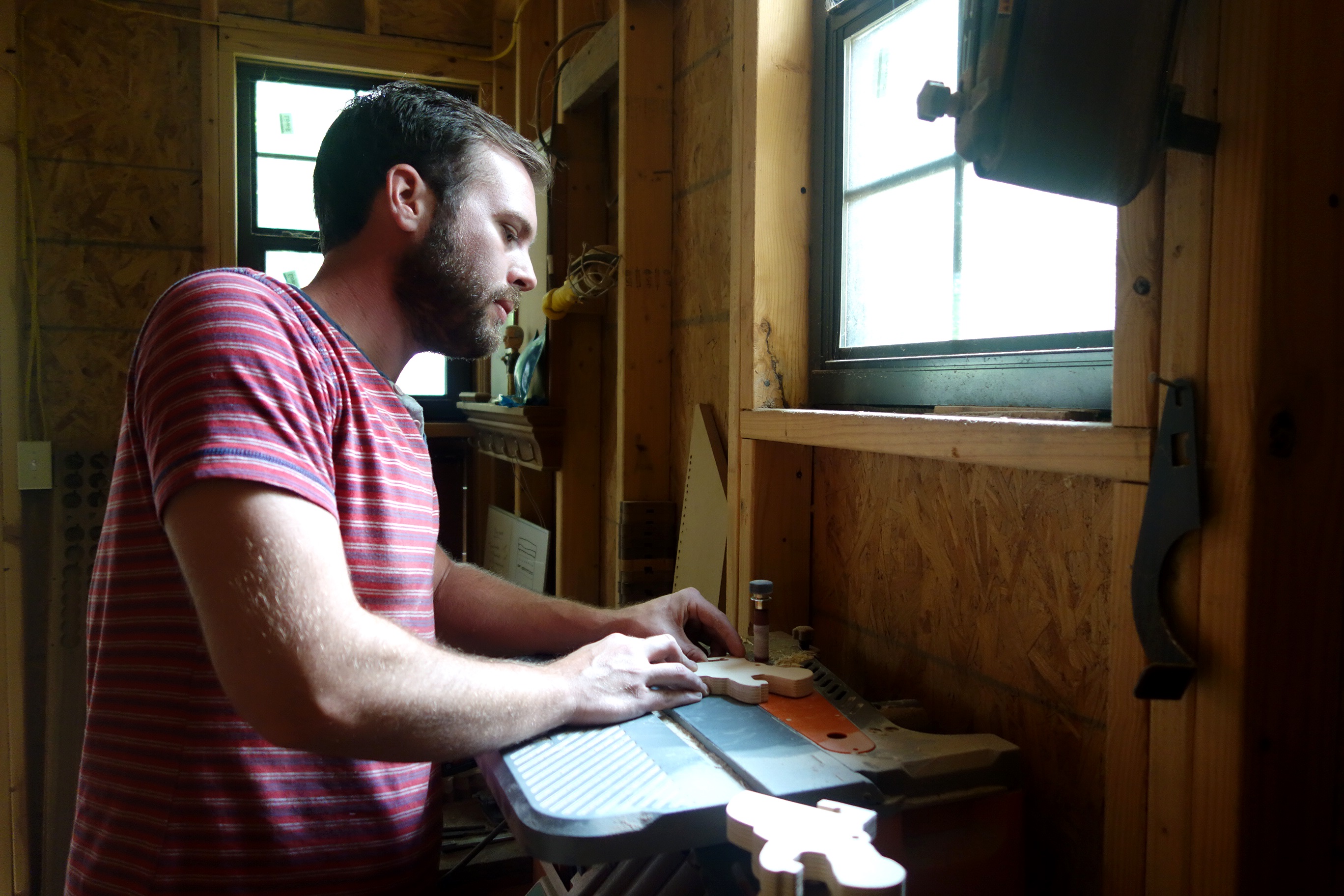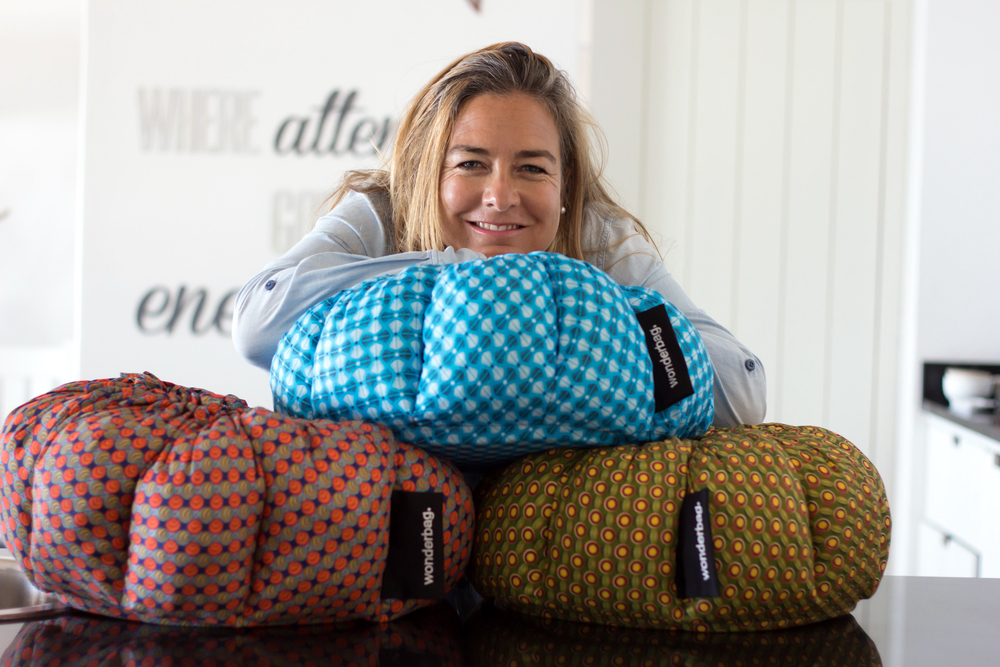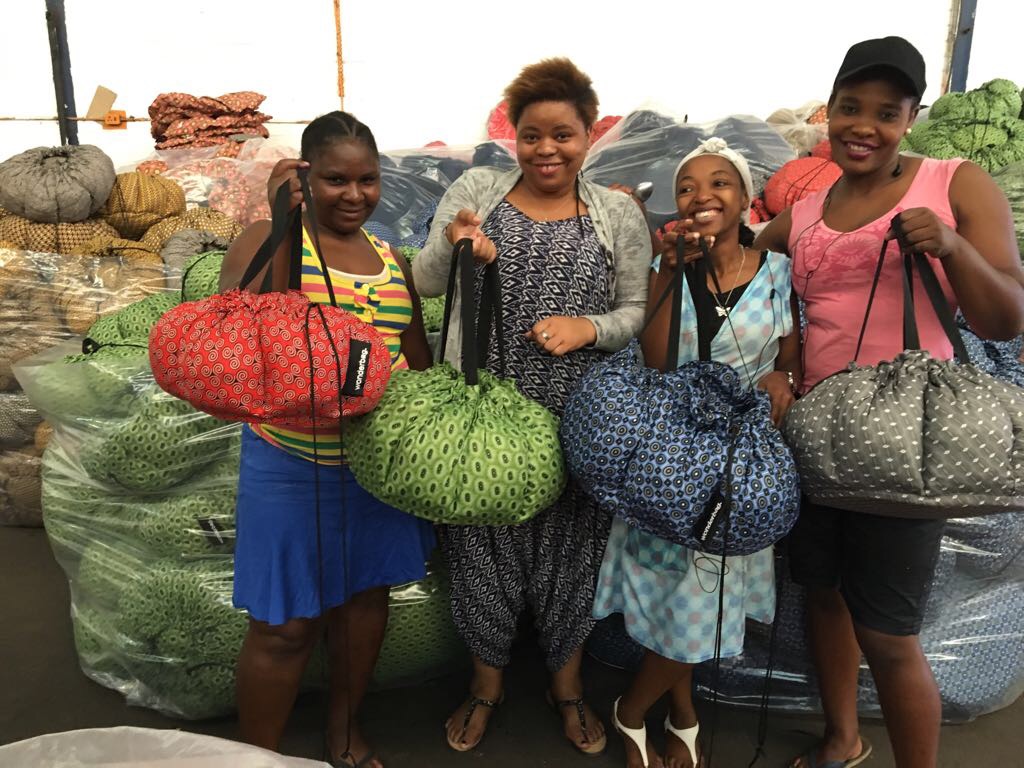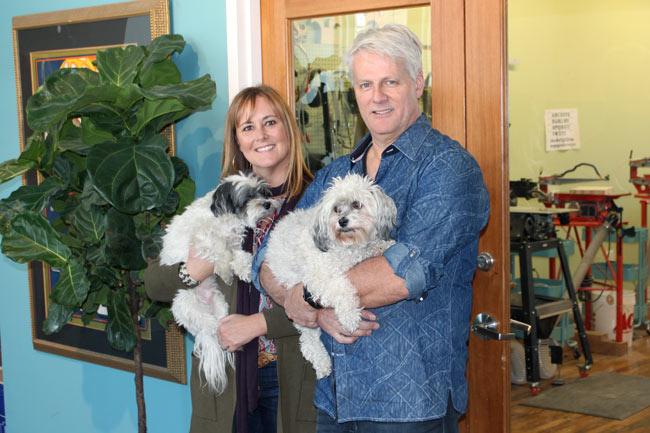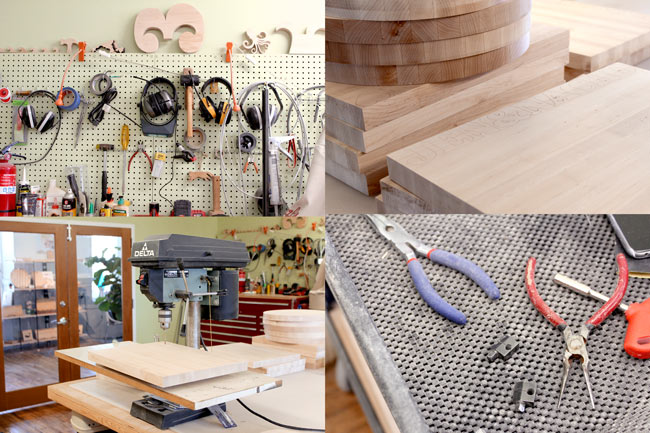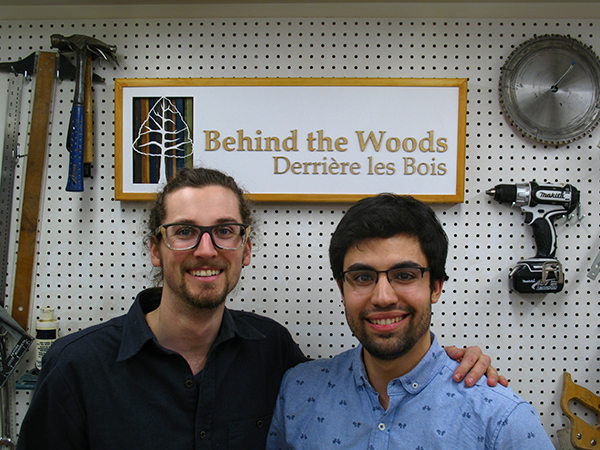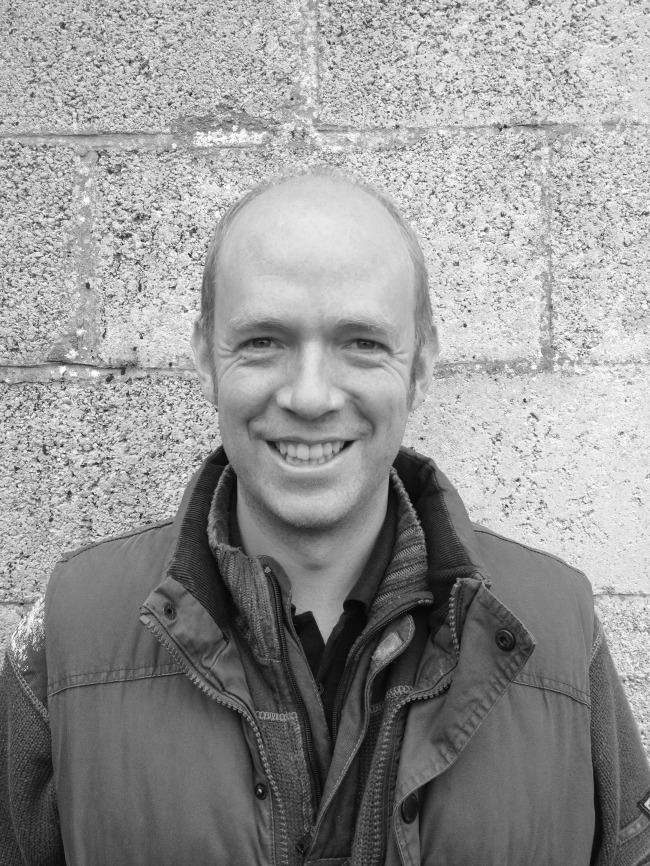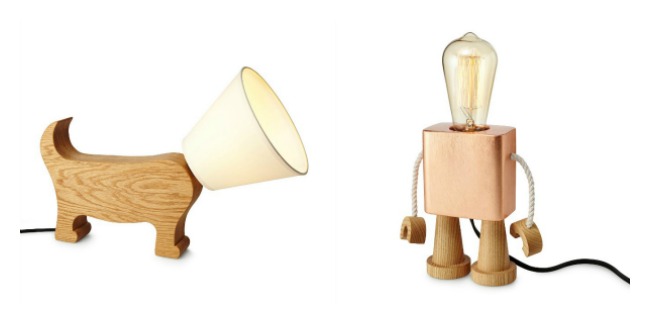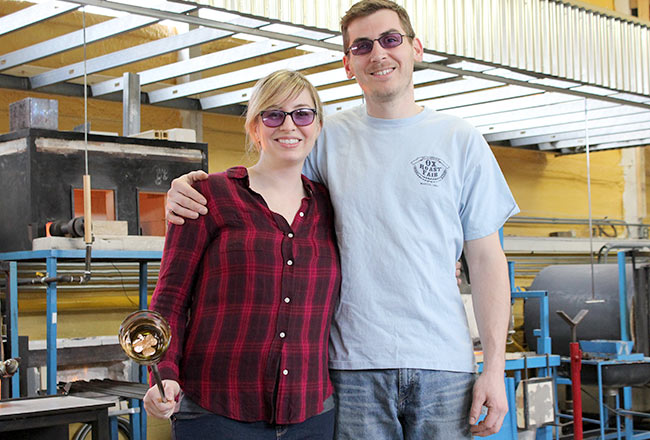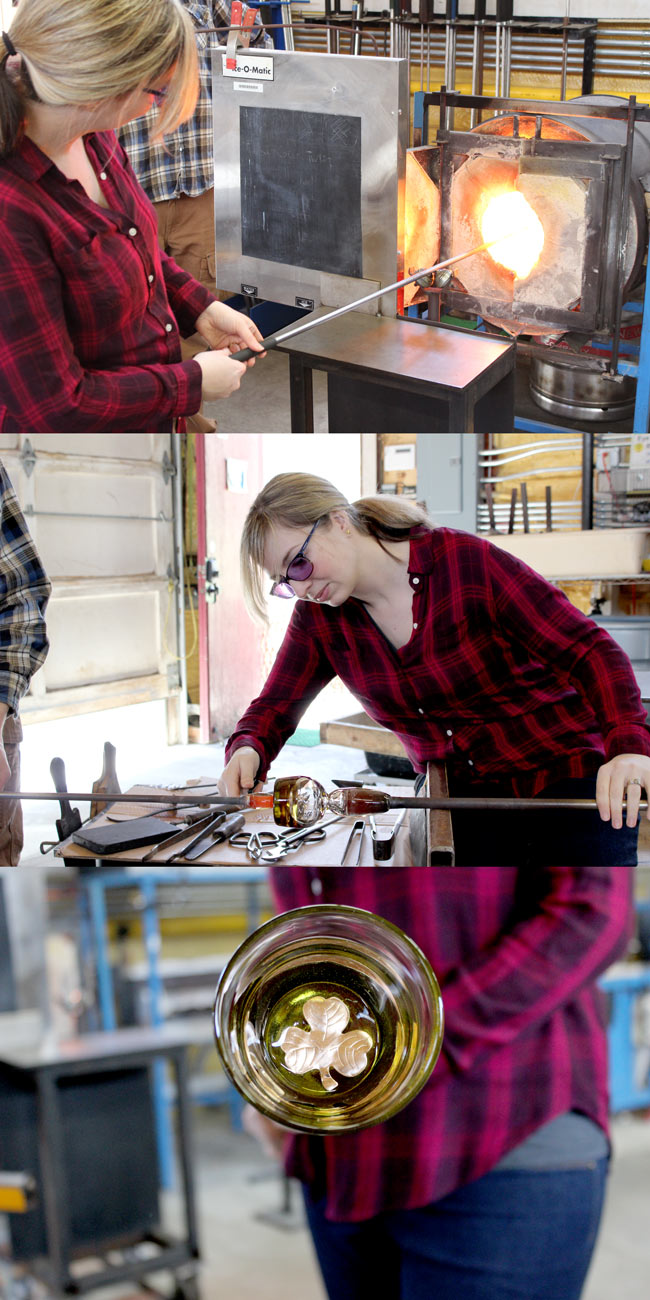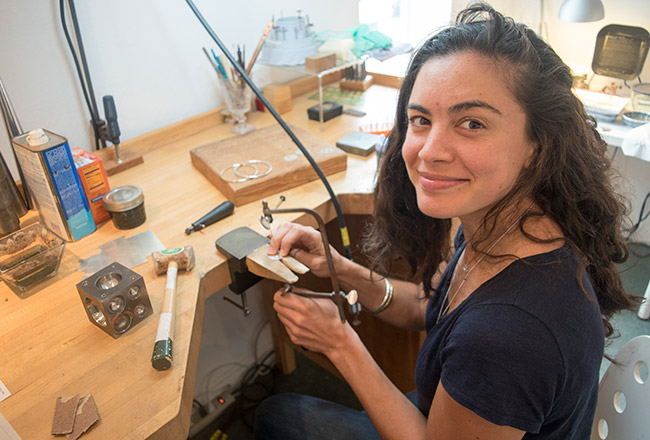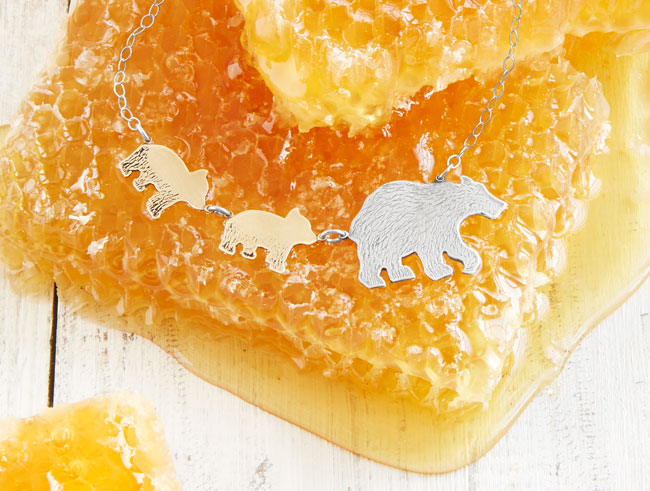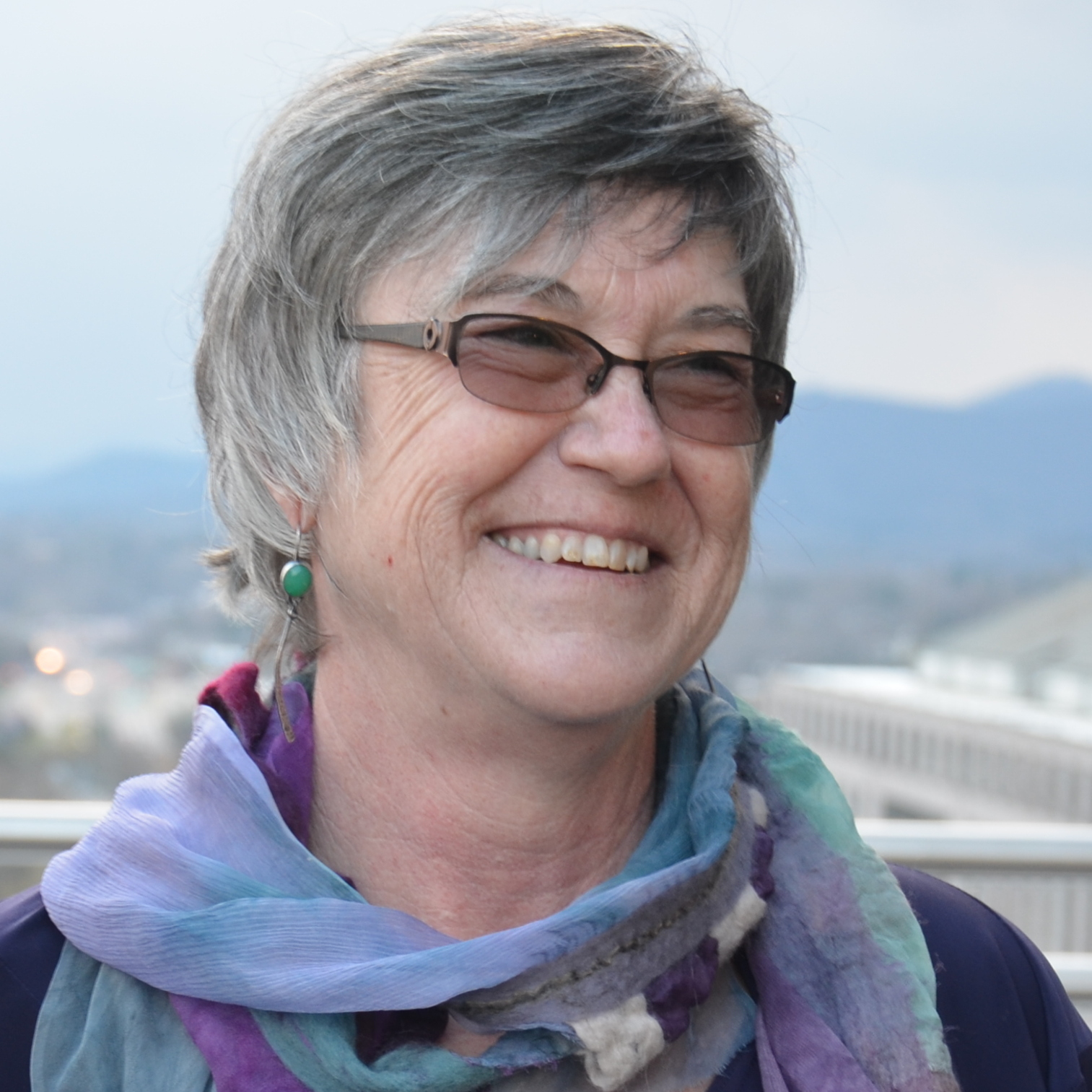
Catherine Murphy has always been an observer. From the rich architecture she saw shuffling around European cities as a child, to the awe-inspiring complexity she’s discovered in nature, Catherine’s brain is a mosaic of interwoven experiences. Today, she fuses these influences into stunning designs for your garden at the Haw Creek Forge. Nestled on the edge of the French Broad River in Asheville, North Carolina, you might find Catherine and her team of artisans collaborating on a new idea or welding shiny plates of copper into praying mantises and hummingbirds. We had the pleasure of learning more about Catherine’s process and her magnificent journey to becoming a metal artist.
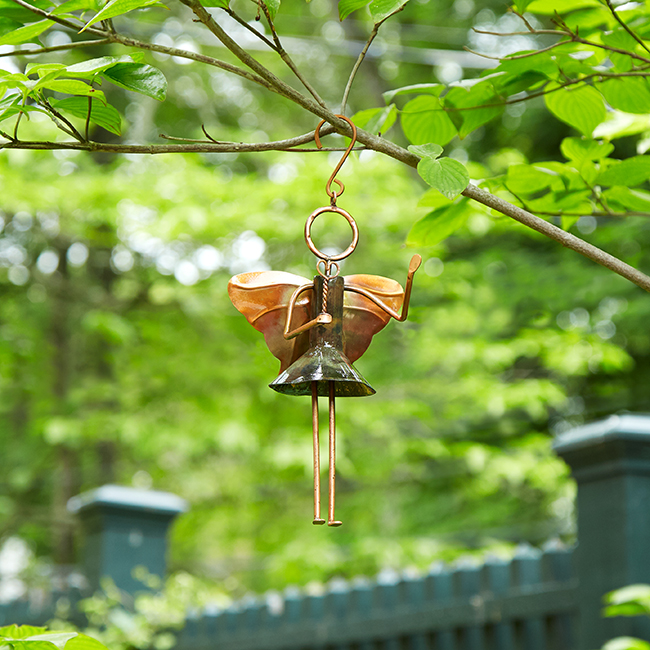
Catherine’s garden fairy makes an enchanting addition to your yard.

